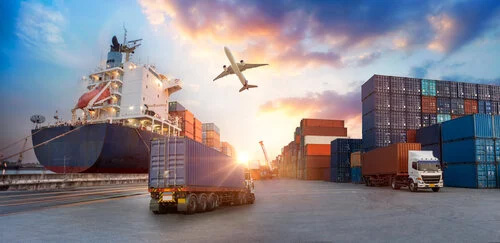Supply chains are essential to most enterprises and need to evolve to survive. However, inflationary pressures and the recessionary environment are not making it easy. Accessibility to goods and services is limited everywhere. Therefore, keeping up with the most recent advancements is crucial to stay ahead of and be ready to tackle supply chain risks and opportunities.
#1 – Technology more at the forefront
More investments will be made in intelligent automation that enables effective, efficient and secure operations. As a result, stores, warehouses, manufacturing facilities and even corporate office buildings will undergo these alterations. In addition, as companies adopt more sophisticated digital enablers, such as cognitive planning and AI-driven predictive analytics, they add greater integrity and visibility into secure supply chains by utilizing advanced log and locate technologies.
Combating future disruptions and adapting to new technological changes will help navigate risks in material access. Leveraging technologies like Blockchain for greater transparency in information sharing, minimize discrepancies and adds to increased workflow automation.
Technology will also assist in easing worker shortages and boosting retention by enhancing current employees' productivity and decision-making. Additionally, as the level of automation rises, it releases the labor from mundane activities and enables workers to concentrate on decisions and problems of greater magnitude.
Unfortunately, cyber criminals will be more sophisticated. So, having a secure network within an updated, technologically advanced facility will be imperative. A solid cybersecurity strategy will beis necessary as enterprises evaluate their operations for increased efficiency and effectiveness. This is especially true for those companies supplying the DoD.
#2 - Sustainability changes operations
Environmentally conscious advocacy groups working to combat climate change continue to push the supply chain to become less harmful to the planet. Due to the significant contributions that transportation and electricity make to greenhouse gas emissions in the U.S., green logistics are already growing in popularity.
Green warehouses now employ timers to monitor how much power, heat, water and gas are used throughout a facility. These procedures aid in reducing excessive waste of materials. Supply chains will also use electric vehicles more frequently, which some think will help lower carbon emissions.
There is also the potential for supply chains to become impacted by climate change, which influences the availability of resources and products. As a result, businesses may consider continuing to look for alternative resources. Rapid rise in energy costs will push manufacturers to re-evaluate their footprint. Friendshoring and nearshoring will again be considered with even a stronger look at work being done onshore.
#3 - Globalization in the workforce
The demand for workforce globalization is driven by the need for more skilled workers. Knowledge workers can manage complicated processes, such as analytics, service provision and procurement processing. However, the rising labor force in the U.S. needs more education and experience to address these operations.
In addition to a skills gap, the need for more interest in supply chain professions contributes to the scarcity of supply chain workers. To recruit younger generations to supply chain professions, warehouse and supply chain managers are predicted to provide unique benefits, including mentoring programs and tuition reimbursement.
For the past few years, supply chains have faced significant difficulties and have been in the public eye. Unfortunately, this trend will not end in 2023. However, knowing these trends will help lessen supply chain disruptions' impact on your company. In addition, being aware of these supply chain trends enable you to adapt to changing consumer expectations and market conditions to maximize efficiency benefits both now and in the future.
For more information about supply chains, visit Supply Chain Efficiencies With Trusted Qualified Vendors or download a PDF.

Sources:
- KPMG – A Look at 2022
- KPMG – A Look at 2023
- FinancesOnline
- Forbes
